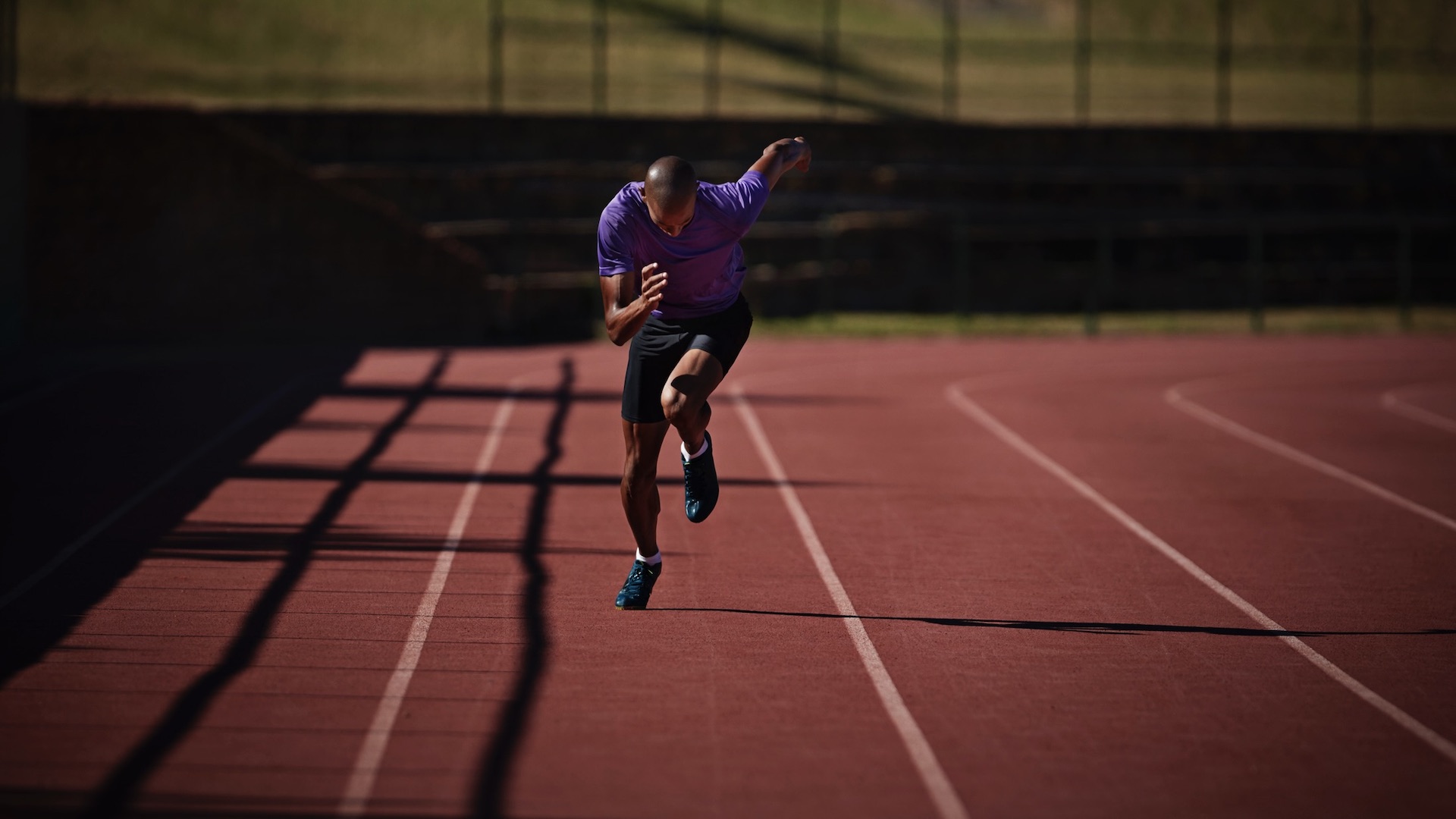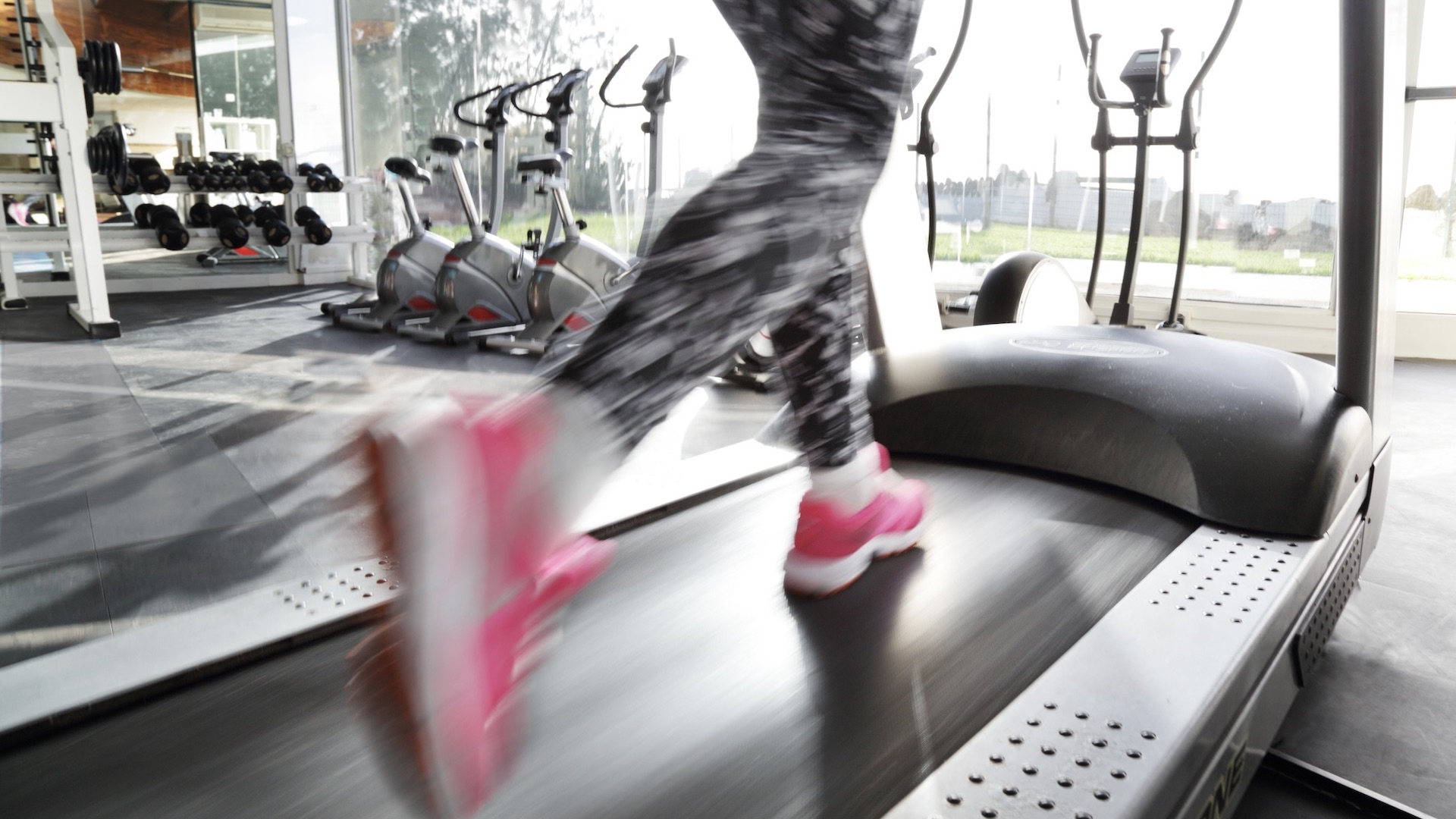
When you find that oft-desired flow state when running, it can feel like you're flying. Of course, you're not, as that would entail your feet leaving the ground entirely. Yes, there's always ground contact time when running and, if you've got a relatively modern GPS watch, you may have noticed the term "contact time" nestled among your post-run stats.
You may be wondering: what's contact time? What does contact time mean for runners? And why does it matter? To answer this and more, we've sent one of our running experts to speak with trainers and former elite athletes to find out what ground contact time is all about.
What is Ground Contact Time?
Garmin describe ground contact time as "the amount of time that your foot is in contact with the ground on each step, measured in milliseconds (ms) when recording a running activity."
Often shortened to GCT, it's a relatively new addition to many sports watches and trackers. Many of the newer Garmin sports watches, including the new Garmin Forerunner 965, include the metric.
The faster a runner can generate force through the ground on any given footstrike, the faster they'll run. So, sprinters have a very short GCT compared to everyday runners.
Meet the expert
Today's best deals

How important is ground contact time?
- GCT can be instrumental in improving your speed
- A runner's speed is reliant on their ability to apply force through the ground quickly
How important is GCT? Is it just another apparently impressive metric for sports watch makers to add to a long – and growing – list of data info that no one really pays attention to?
Personal trainer Lee Mitchell says: “GCT may seem, on the surface, another vanity metric that has been included as just another measurement on sports watches to ‘pad out’ their already bloated feature bundles. However, when it comes to running, GCT can be instrumental in improving your speed.
“A runner’s speed is almost solely reliant on their ability to apply force through the ground as quickly as possible. The faster a person can apply force through the ground, the quicker they will be propelled forward. It’s simple science!
“For example, elite sprinters are likely to have an incredibly short GCT in comparison to casual runners.”
Lee reports that the GCT measurement can also indicate why a run has gone poorly or why it has been a great session. He sys: “GCT, in tandem with velocity and distance, is the best way to create the complete picture to explain a runner's performance in any given race.”
How do watches measure ground contact time?
- Watches actually struggle to get an accurate GCT measurement
- The best way to measure GTC is on a treadmill
The method for recording GCT depends on the sports watch and the type of technology you are using. Lewis Moses, a former elite athlete and founder of New Levels Coaching cautions: "Quite often watches alone are very limited in terms of measuring GTC.
"If you're wearing something like a foot pod, it can help to measure ground contact, but the watch alone will struggle to get an accurate measurement, so runners should be careful when you're reading into this data.
"The best way to measure GTC would be on a treadmill if you're getting a running technique video analysis or if running on force plates, which can be built into specific surfaces."

How to achieve better contact time
- Heel strikers tend to have a longer GCT than those who land on the mid-forefoot
- We should strive to have a GCT of below 300 milliseconds
- The shorter the contact time, the better
While Lee has indicated that the best runners will have a short GCT, there are many different types of runners and running gaits and this can affect the GCT.
Lewis, who competed for Great Britain at the World Indoor Athletics Championships, likes to describe contact time as “the opposite of flight time”.
He says: “It can be hard to define a good ground contact time because the running stride varies so much from individual to individual and we also find that these styles affect the time on the ground.
“For example, on average, a classic heel striker is more likely to have longer ground contact than someone who lands mid-forefoot. There is some evidence to suggest that we should strive to have a ground contact time of below 300 milliseconds, however faster runners do tend to have a significantly lower ground contact time to this, even as low as 175-200 milliseconds.
“What we do know that shorter ground contact time can be better when it come to running performance and there are the added benefits of being able to utilise stored energy, if you don’t stay on the ground too long.”
Lewis goes on to offer an example of the Achilles tendon. He says: “There is energy that is stored in the tendon and, in essence, it’s free to use, but it is only stored there for just less than a quarter of a second before it is dissipated as heat and then wasted.
“This is why the ground contact is important, because if you stay on the ground for too long, you won’t utilise that free energy when you spring back off the ground.”
Running drills for improved contact time
- Drills and strength work can help improve GCT
- Consider what level you are before you begin the drills
Lewis suggests running drills and plyometrics to help runners to improve ground contact time. This can work in tandem with having an impact on vertical oscillation, too.
Lewis says: “Basically you can improve your ability to spring off the ground. In addition to this, strength work is also important because it will help to build stronger structures and this will help with generating more force or power off the ground.
“Before literally ‘jumping’ into all exercises, I would always consider what level you are at with this type of work and whether you have done it before. It’s always better to start at a lower level and build up, therefore the drills I have recommended below, have been categorised into different levels.”
Beginners drills for better contact time
These are drills for runners who have never tried anything like this before.
Double or single leg hop: The aim is to hop from one spot to the other and stick the landing. These small hops can help with control and initial ground contact of landing back underneath the body
Double or single leg continuous hops: This is a continuous hop where you spring back off the ground. This will help you to work quick ground contact.
Intermediate drills for better contact time
These are drills for runners who have tried something similar before but haven’t done them for a while.
Double or single leg continuous hops: This is a continuous hop. Try to ensure you spring back off the ground as you hop.
Ankle dribbles: This drill focuses on stepping directly over the height of your ankle (hence the name) and driving down to land on your heel and transitioning through the full length of the foot as you take the next step (dribble) back off the ground.
Advanced drills for better contact time
These are ground contact time drills for runners who continually perform drills and are confident with progression.
Ankle dribbles: This drill focuses on stepping directly over the height of your ankle (hence the name) and driving down to land on your heel, then moving through the full length of the foot as you take the next step (dribble) back off the ground.
B-Skips: The B-skip is a great drill to improve the backward motion of pulling/scraping the foot back down underneath the body and on to the ground.

Ground contact time - so now you know!
If you had been wondering what the metric ground contact time (GCT) on your sports watch was all about, now you know. It's good to know you can also improve contact time for better running performance with a series of drills, too.







